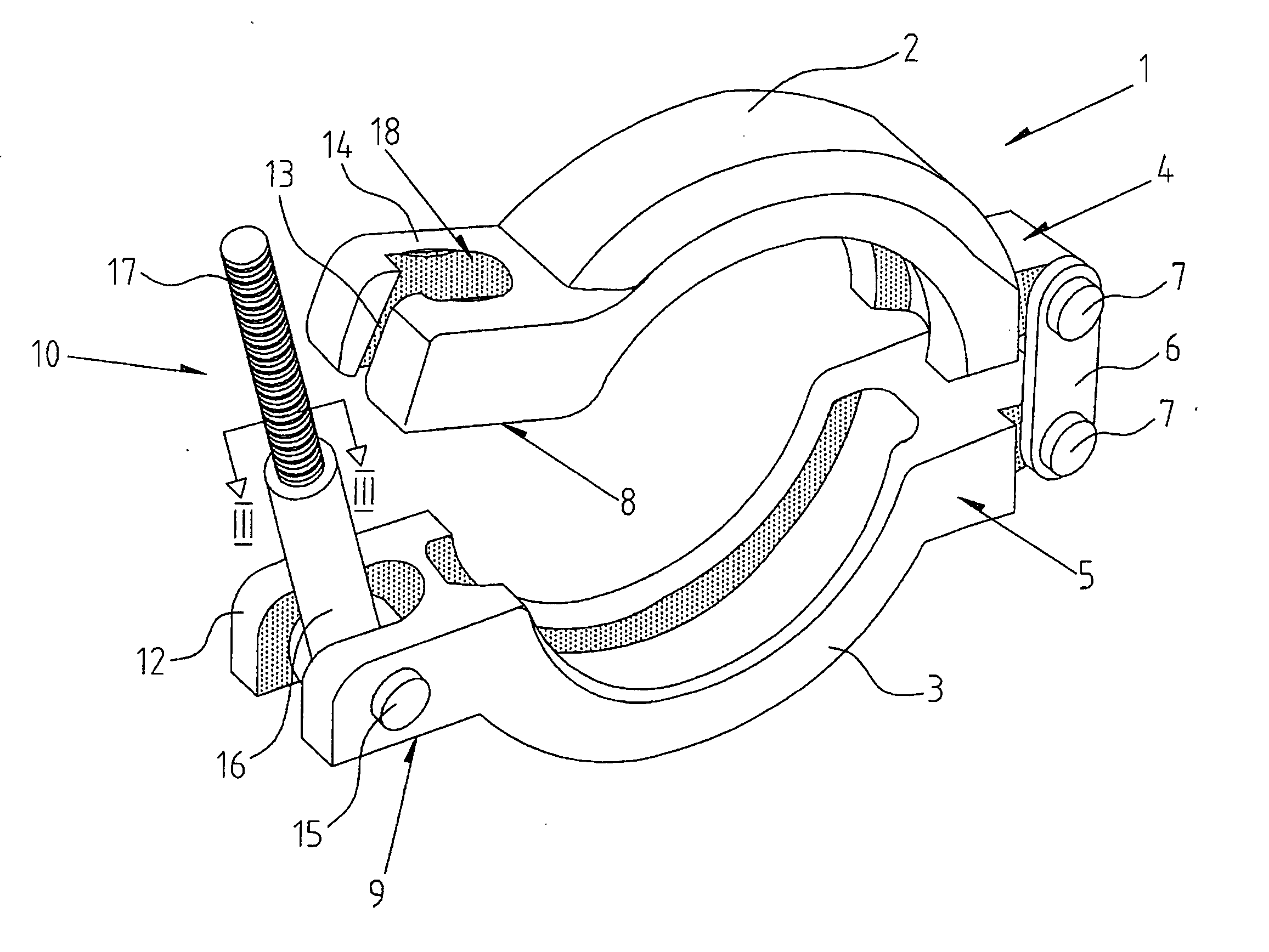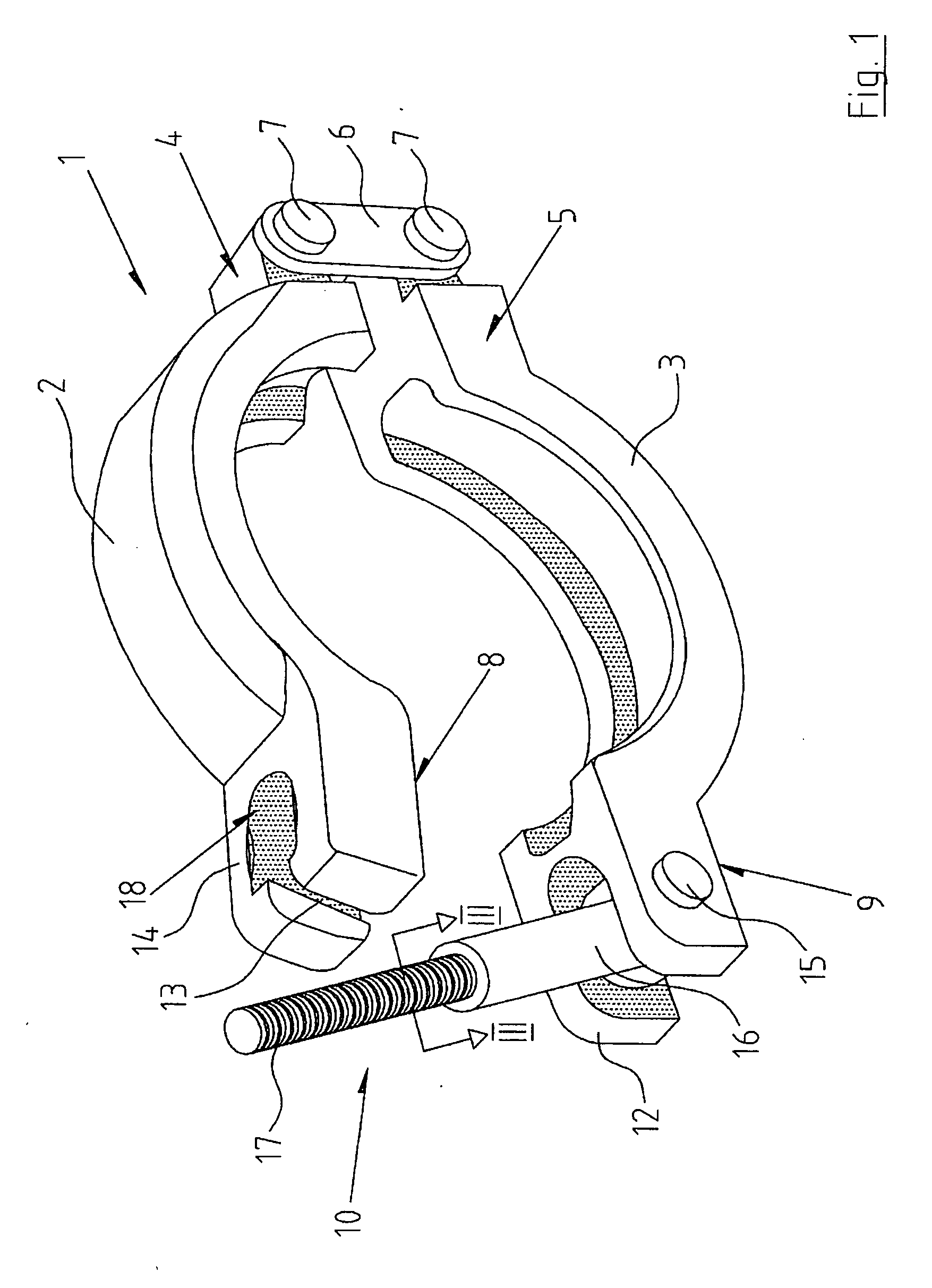Pipe coupling clamp
- Summary
- Abstract
- Description
- Claims
- Application Information
AI Technical Summary
Benefits of technology
Problems solved by technology
Method used
Image
Examples
Embodiment Construction
[0041] The invention will be more clearly understood from the following description of some embodiments thereof, given by way of example only, with reference to the accompanying drawings, in which:
[0042]FIG. 1 is a perspective view, partially disassembled, of a pipe coupling clamp according to the invention,
[0043]FIG. 2 is a perspective view showing the clamp about to be closed,
[0044]FIG. 3 is a sectional view in the direction of the arrows III-III of FIG. 1,
[0045]FIG. 4 is a sectional view of the pipe coupling clamp shown in FIG. 2,
[0046]FIG. 5 is a sectional view of a wing-nut used in conjunction with the pipe coupling clamp shown in FIGS. 1 to 4,
[0047]FIG. 6 is a sectional view similar to FIG. 3 of an alternative construction of clamp according to the invention,
[0048]FIG. 7 is an exploded view of a still further pipe coupling clamp according to the invention,
[0049]FIG. 8 is a perspective view of the assembled pipe coupling clamp of FIG. 7,
[0050]FIG. 9 is a perspective vi...
PUM
 Login to View More
Login to View More Abstract
Description
Claims
Application Information
 Login to View More
Login to View More - R&D
- Intellectual Property
- Life Sciences
- Materials
- Tech Scout
- Unparalleled Data Quality
- Higher Quality Content
- 60% Fewer Hallucinations
Browse by: Latest US Patents, China's latest patents, Technical Efficacy Thesaurus, Application Domain, Technology Topic, Popular Technical Reports.
© 2025 PatSnap. All rights reserved.Legal|Privacy policy|Modern Slavery Act Transparency Statement|Sitemap|About US| Contact US: help@patsnap.com



